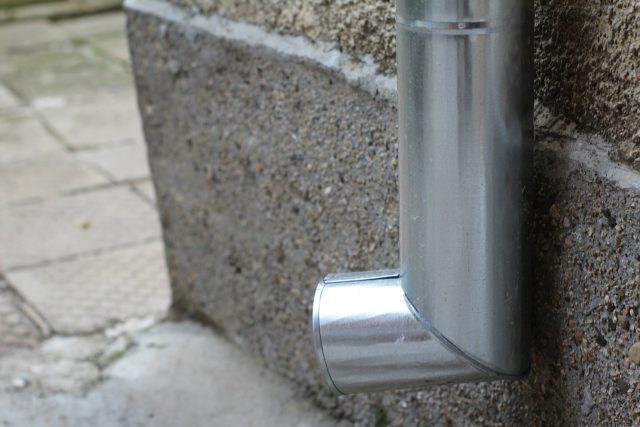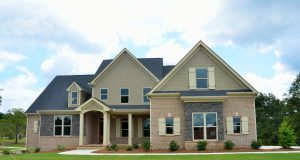
When embarking on a self-build project, considering drainage is crucial to ensuring the longevity, functionality, and legal compliance of your property. Therefore, a suitable and well-functioning drainage system is going to be essential to your construction. If something goes wrong underground, it can be very expensive and disruptive to fix, so it is going to save you time, money and hassle to try and get the drainage system installed properly without cutting corners or skimping on quality materials.
To get you off on the right footing, here is a comprehensive guide to drainage considerations for self build projects:
Site Survey and Evaluation:
Before any construction begins, conduct a thorough survey of the site to assess natural drainage patterns, soil types, groundwater levels, and potential sources of flooding. Understanding these factors will help in designing effective drainage systems. Start by clearly defining the boundaries of your property to understand the area you’re working with. This will help determine where water will naturally flow and where it needs to be directed away from structures. Determine the type of soil on your property and its permeability. Sandy soils drain quickly, while clay soils retain water, affecting how water moves across your property. Conduct soil percolation tests to assess how quickly water drains through the soil. This will help determine if additional drainage measures are needed to prevent waterlogging.
Legal Regulations:
Familiarise yourself with local building codes, regulations, and planning permissions related to drainage. Ensure compliance with laws regarding surface water drainage, sewer connections, and environmental regulations such as stormwater management. It is good practice to refer back and ensure compliance with these regulations throughout your project, as they are prone to changes and updates.
Topography and Grading:
The site’s topography influences drainage. Plan the positioning and grading of your property to facilitate natural water runoff away from buildings and towards appropriate drainage outlets such as swales, ditches, or stormwater drains. Determine the natural slope of your land. This can usually be done by observing how water drains during rain or by using a transit or laser level for more accuracy. Identify high points and low points on the property where water may accumulate or where it can be diverted towards desired drainage points. It is also important to locate any existing drainage features, such as ditches, culverts, or storm drains, on or near your property. Understanding how these features interact with your land will help in planning your drainage system.
Foundation Drainage:
Implement proper foundation drainage to prevent water accumulation around the building’s base, which can lead to dampness, mould, and structural damage. Use techniques like French drains, perimeter drains, or waterproof membranes. You should also determine the type of soil on your property and its permeability. Sandy soils drain quickly, while clay soils retain water, affecting how water moves across your property. Prior to work commencing, conduct soil percolation tests to assess how quickly water drains through the soil. This will help determine if additional drainage measures are needed to prevent waterlogging.
Surface Water Management: Develop strategies for managing surface water runoff from roofs, driveways, patios, and other impermeable surfaces. Install guttering, downspouts, and soakaways to divert water away from the property and prevent flooding or soil erosion.
Sustainable Drainage Systems (SuDS):
Consider implementing SuDS techniques to manage surface water in an environmentally friendly and sustainable manner. SuDS features may include permeable paving, green roofs, rain gardens, and attenuation ponds to slow down and treat runoff water naturally. Determine the size and capacity of drainage infrastructure components based on factors such as anticipated rainfall intensity, surface area to be drained, and soil permeability. Ensure that drainage pipes, culverts, and other structures are sized appropriately to handle expected water flow without causing backups or flooding.
Sewer Connections:
Connecting a self-built home to the sewer system involves several steps to ensure compliance with local regulations, proper functionality, and safety. Research local building codes, zoning regulations, and sewer system requirements regarding home connections. Different municipalities may have specific rules governing sewer connections, including permit requirements and connection fees. Reach out to the local utility provider responsible for sewer services to obtain information on available connection points, connection procedures, and any requirements or restrictions specific to your property.
Septic Tanks or Treatment Systems:
When considering septic tanks or treatment systems for self-built homes, several factors need to be taken into account, including site conditions, local regulations, environmental impact, and personal preferences. Before choosing a septic tank or treatment system, conduct a thorough site evaluation to assess soil permeability, groundwater depth, topography, and available space for installation. This information will help determine the most suitable system for your property and will be specific to the expected wastewater flow rate and capacity requirements based on the size of your household, water usage habits, and anticipated future growth. Choose a septic system or treatment technology that can adequately handle your household’s needs. If you’re unsure about the most appropriate sewage treatment system for your property, consult with septic system designers, engineers, or environmental consultants. They can provide expert advice tailored to your specific site conditions and requirements.
Flood Risk Assessment:
Look for areas prone to flooding or erosion, both on your property and neighbouring properties. These areas may need special attention and possibly engineered solutions to mitigate drainage issues. Once you have assessed the risk of flooding on your property, you can then take appropriate measures to mitigate potential damage. Consider flood-resistant construction techniques, the elevation of habitable spaces, and the installation of flood barriers or pumps where necessary.
Maintenance Considerations:
Once your drainage plan is finalised, proceed with implementing the drainage system according to the plan. Regularly inspect and maintain the system to ensure proper functioning and address any issues that may arise over time. Planning for ongoing maintenance of drainage systems will ensure their effectiveness and longevity. Regularly inspect and clean gutters, drains, and stormwater management features to prevent blockages and ensure proper functioning.
Professional Assistance:
While self-build projects allow for hands-on involvement, certain aspects of drainage design and installation may require professional expertise. Consult with architects, engineers, or drainage specialists to ensure the optimal design, compliance, and performance of your drainage systems.
By addressing these drainage considerations during the planning and construction phases of your self-build project, you can minimise the risk of drainage-related issues and create a sustainable, resilient, and legally compliant property.













